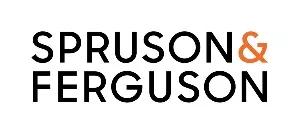- within Intellectual Property topic(s)
- in North America
- with readers working within the Retail & Leisure industries
- within Privacy and Corporate/Commercial Law topic(s)
- with Senior Company Executives, HR and Finance and Tax Executives
With double patenting prohibited in China, many applicants have utilised a dual filing strategy to secure patent rights, but this may be set to change.
As noted in our article on the CNIPA Draft Amendments to the Guideline of Patent Examination in May, the rules around dual filing in China have come under scrutiny. Our IP experts in China explore the dual filing strategy and the impact of potential changes.
China's patent system provides three types of patent rights: invention patents, utility model patents, and design patents.
While utility model patents have certain limitations compared to invention patents – such as a shorter term of protection (10 years instead of 20) and relatively less stable rights – they also offer some advantages, including a simplified examination process, a faster timeline to allowance and grant, lower inventiveness requirements, and reduced costs.
For applications originally filed in China or entering China via the Paris Convention, applicants frequently utilise a "dual filing" strategy by submitting both utility model and invention patent applications for the same innovation to take advantage of both patent types. However, potential regulatory changes may significantly influence the future applicability of the dual filing strategy.
"Dual filing" in current practice
"Dual filing" refers to the practice in which an applicant files both an invention patent application and a utility model patent application for the same invention on the same day, accompanied by a declaration stating that both applications are submitted simultaneously.
In China, the prohibition against "double patenting" prevents the grant of more than one patent rights for a single invention. However, applicants utilising a dual filing strategy may retain both an invention patent and a utility model if the ultimately allowed claims of the two applications are not identical.
Should the allowed claims be deemed identical, the applicant may either abandon the utility model to obtain the invention patent, or amend the invention patent application's claims to establish a difference in scope.
Advantages and disadvantages of dual filing
The dual filing strategy offers several advantages as well as certain limitations, some of which are outlined below:
Advantages
- Earlier protection
Typically, utility models have a faster time to grant than invention patents, enabling earlier protection and enforcement. - Fallback protection
Since utility models have lower inventiveness requirements, they may serve as a fallback if the corresponding invention patent applications are ultimately rejected.
Disadvantages
- Higher costs
Filing two applications for one invention increases the application costs and potential maintenance fees if both patents are retained. - Ineligible for accelerated examination
Unlike standard non-dual-filing invention patent applications, those filed under the dual filing strategy are excluded from prioritised examination and accelerated pre-examination. Furthermore, utility model applications are ineligible for any form of accelerated examination.
- Ineligible for Patent Term Adjustment
According to the latest Implementing Regulations of the Patent Law1 and Patent Examination Guidelines2, invention patent applications filed under the dual filing strategy are ineligible for Patent Term Adjustment (PTA) – a mechanism that compensates for unreasonable prosecution delays by extending the patent term.
Potential changes to dual filing policy
In April 2025, China National Intellectual Property Administration (CNIPA) released "Draft Amendments to Patent Examination Guidelines"3 that could significantly impact the dual filing strategy. Key proposed changes include:
1. Stricter declaration requirements
A newly added clause (Section 6.1, Chapter II, Part II) states:
"Where the same applicant files both a utility model and an invention patent application on the same day with corresponding declarations, whether the two applications relate to the same invention shall be determined based on the applicant's declaration in the request form."
This clause actually stipulates that the "identicalness" or "sameness" of claims of the utility model and the invention patent application shall be assessed based on the applicant's declaration at the time of filing, rather than through examination by the patent office during substantive examination.
Consequently, the clause places full responsibility on the applicant to accurately disclose the relationship between the two applications in a dual filing. Failure to provide a truthful declaration may result in adverse consequences during patent prosecution.
2. No more amendment-based avoidance of double patenting
Under the current Patent Examination Guidelines (Section 6.2.2, Chapter III, Part II), applicants facing a double patenting issue may resolve it "either by amending the invention application or by abandoning the utility model patent rights." The draft amendments propose to delete this clause, which would eliminate the option to amend the invention application to avoid double patenting.
3. Mandatory abandonment of utility model for grant of invention patent
A new clause (Section 6.2.2, Chapter III, Part II) clarifies:
"If the applicant does not abandon the utility model patent rights, the invention patent application shall be rejected."
While the full implications of Items 2 and 3 of the amendments remain to be clarified, they appear to effectively preclude the possibility of simultaneously holding both a utility model and an invention patent for the same invention via the dual filing strategy. To obtain an invention patent under the dual filing strategy, the applicant must abandon the utility model – eliminating the previous option to retain both patents provided they do not share any identical claim scopes. Ultimately, only one patent right will be permitted per invention.
Strategic use of "dual filing" under the new policy
The draft amendments were open for public comments until 15 June 2025. It is not yet certain whether they will be adopted or when they would take effect. Should they enter into force and indeed preclude the possibility of simultaneously holding both patents under the dual filing strategy, applicants may still utilise the dual filing strategy for purposes such as the following:
- Utility model as fallback
In cases where the invention patent application is ultimately rejected, the utility model can serve as a backup, ensuring that some level of protection is still secured. - Utility model for early patentability
indication
Utility model applications usually undergo only preliminary examination – unlike invention patent applications, which require both preliminary and substantive examination – resulting in a significantly faster review process.
Although the 2023 revised Implementing Regulations of the Patent Law4 also requires examination of novelty and inventiveness for utility models, and CNIPA increasingly evaluates novelty and inventiveness in addition to formalities, utility model applications are typically still examined and granted faster than invention patent applications. This accelerated process offers early insight into the patentability of the invention, providing valuable information regarding CNIPA's position on novelty and inventiveness of the corresponding invention patent application before it undergoes substantive examination.
Summary
Dual filing strategy remains a valuable tool for optimising patent prosecution and maximising patent protection in China. However, upcoming regulatory adjustments may significantly impact the strategy, necessitating more cautious and strategic implementation.
How we can help
If you have any specific concerns or questions in relation to the dual filing strategy in China, reach out to our team of experts for a discussion.
Footnotes
1 Implementing Regulations
of the Patent Law of the People's Republic of China (2023
Revision) (November 21, 2023).
2 Patent Examination
Guidelines (2023)
3 China National Intellectual Property Administration.
Notice on Soliciting
Public Comments on the Draft Amendments to the Patent Examination
Guidelines (April 30, 2025).
4 Implementing Regulations
of the Patent Law of the People's Republic of China (2023
Revision) (November 21, 2023).
The content of this article is intended to provide a general guide to the subject matter. Specialist advice should be sought about your specific circumstances.




